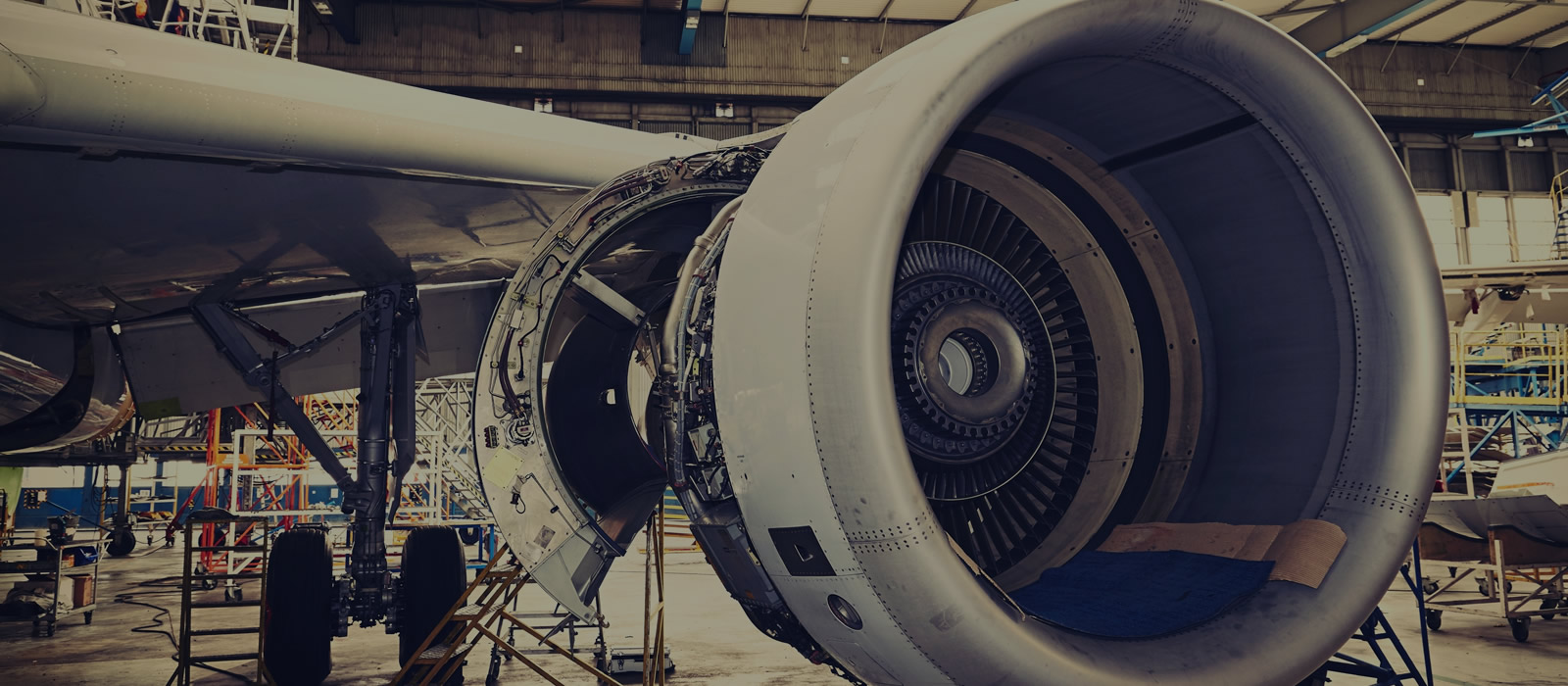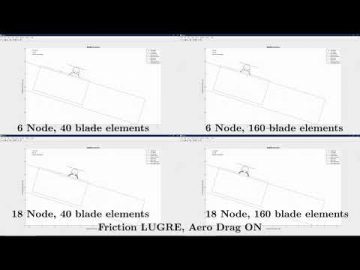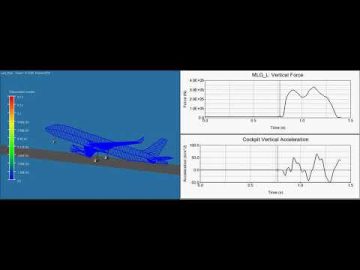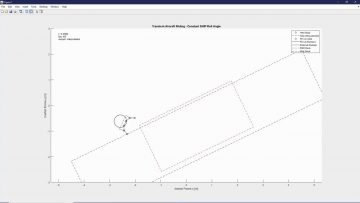Research Areas
Flapping Wing Micro Aerial Vehicle
In collaboration with other groups, this research project explores everything from additive manufacturing to aerodynamic principles. While previous students have developed flapping mechanisms and methods to print three-dimensional wings, the end goal of the project is to develop a fully functional flapping wing micro aerial vehicle (MAV). Although the group isn’t currently manufacturing a MAV, the work of our current student will facilitate the design procedure involved in selecting a wing planform. It will also aid biologists in determining the lift generated by a wing. Our current research objective is to determine the correlation between wing geometry and various aerodynamic coefficients.
Flexible Aircraft Landing and Ground Movement
Airframe Flexibility
Aircraft landing gear are vital aircraft components used to absorb landing loads so the aircraft and its payload can safely and comfortably come to rest on the ground. As modern aircraft becoming lighter through advanced materials and design, there is a need to reassess the industry standard practices used in the prediction of aircraft landing loads–the very loads used to design components that make up a significant percentage of the aircraft’s mass. The use of lightweight materials has resulted in greater aircraft flexibility. However, for landing load estimation, traditional industry practices have assumed the aircraft to be rigid due to the complexity of a flexible analysis and this may not be applicable with modern aircraft construction. This research investigates the effects of aircraft flexibility for landing loads predictions to modernize industry standard practices and develop an efficient method to represent such effects. Modal parameters such as resonance frequencies and mode shapes of aircraft prototypes are determined experimentally using ground vibration test (GVT). Therefore, another goal of the current research is to find the modal parameters using an alternative method which is called the Operational Output-Only Taxi Vibration Test (TVT) based on natural excitation.
The techniques developed under this research will allow for faster and more accurate simulation of aircraft ground movement. Since the International Civil Aviation Organization reports that 53% of all commercial accidents from 2008 to 2016 are categorized as Runway Safety, which includes loss of control on ground and hard landing events, these techniques attempt to directly address these issues for safer aviation.
Novel Shock Absorbers
Hard landing scenarios not only form a critical design load case for the fore- and aft-fuselage of aircraft, but the loading can be uncomfortable for passengers and crew due to the high accelerations onset as the aircraft comes to rest on the ground. Not only are these high accelerations uncomfortable, but they may interact with the pilot where an inadvertent activation of the controls may occur. With an understanding of the loading and the frequency response of the structure and subsystems, one can design a strategy to alter the loads that can be realized by novel shock absorbers, such as passive mechanical networks. This can have several implications including reduced landing loads, reduced stressing of the airframe, and improved comfort of passengers and crew.
Shipboard Landing
Unmanned aircraft systems (UAS) are seeing increased use in industries ranging from environmental monitoring and protection to naval operations, and even parcel delivery. Their capacity to operate in environments hazardous to humans, their preclusion of human error during operations, and progressively-declining operating costs are some of the motivations driving the increasing use of UASs. Maritime shipboard operations in extreme weather is an ideal example of a task considered hazardous to humans for which UASs offer a widely-recognized beneficial alternative. Currently, there exist assistive landing, securing and handling devices for shipboard helicopter operations. As with helicopters, managing ship deck and aircraft dynamics for UASs is critical. However, for UASs, aerodynamic forces acting on the UAS become even more important due to the higher thrust to weight ratio of UASs compared to helicopters. Furthermore, they often use relatively rigid ‘skid-type’ landing gear unlike conventional maritime helicopters that use compliant suspensions and grippy tires. These characteristics constrain mechanical securing and traversing options, and present more complex ship-helicopter interface behaviors which must be characterized.
A fully-spatial simulation for the complete recovery flight and shipborne maneuvering phases of shipboard helicopter operations named SRAMSS (Skid-equipped Rotary-wing Aircraft Maneuvering and Securing Simulation) is being developed. It expands the state-of-the-art in simulation capabilities, targeted predominantly at wheeled landing gear, to include skid-type landing gear. Moreover it provides a novel, yet simple securing concept for skid-equipped aircraft.
The simulation provides extensive analysis capabilities for the in-air and on-deck ship-helicopter dynamic interface analysis, from ship deck station keeping to maneuvering secured aircraft into the shipborne hangar. The package incorporates dynamic finite element modelling into Kane’s equations for dynamics, contact mechanics with oriented dynamic response including the LuGre friction model to capture complex friction behavior, incorporates aerodynamic drag, and blade element theory to generate induced thrust and moments from the rotor disc.
Urban Air Mobility
The structure of air flow in urban environment may influence the air mobility applications. Therefore, one area of study is concerning the analysis of worst-case urban flows characteristics to establish standardized test cases that can be utilized to examine the control system response of a large size air-taxi when immersed in urban environment.
People
Publications
| 1 | (Accepted) A. Schock and R. Langlois, “Spacial Simulation of Shipboard Operations for Skid-equipped Rotary-wing Aircraft”, CSME Congress 2020. | |
| 2 | T. A. Stachiw, F. Khouli, R. G. Langlois, and F. F. Afagh, “The Use of an Inerter in an Aircraft Landing Gear Suspension for Improved Passenger and Crew Comfort at Touchdown,” in AIAA SciTech 2020, Orlando, FL, 2020, AIAA-2020-1681. doi: 10.2514/6.2020-1681 | Link |
| 3 | T. A. Stachiw, F. Khouli, R. G. Langlois, and F. F. Afagh, “The Effect of Airframe Flexibility on Dynamic Landing Gear Loads,” presented at CASI AERO 2019, Laval, QC, 2019. |











